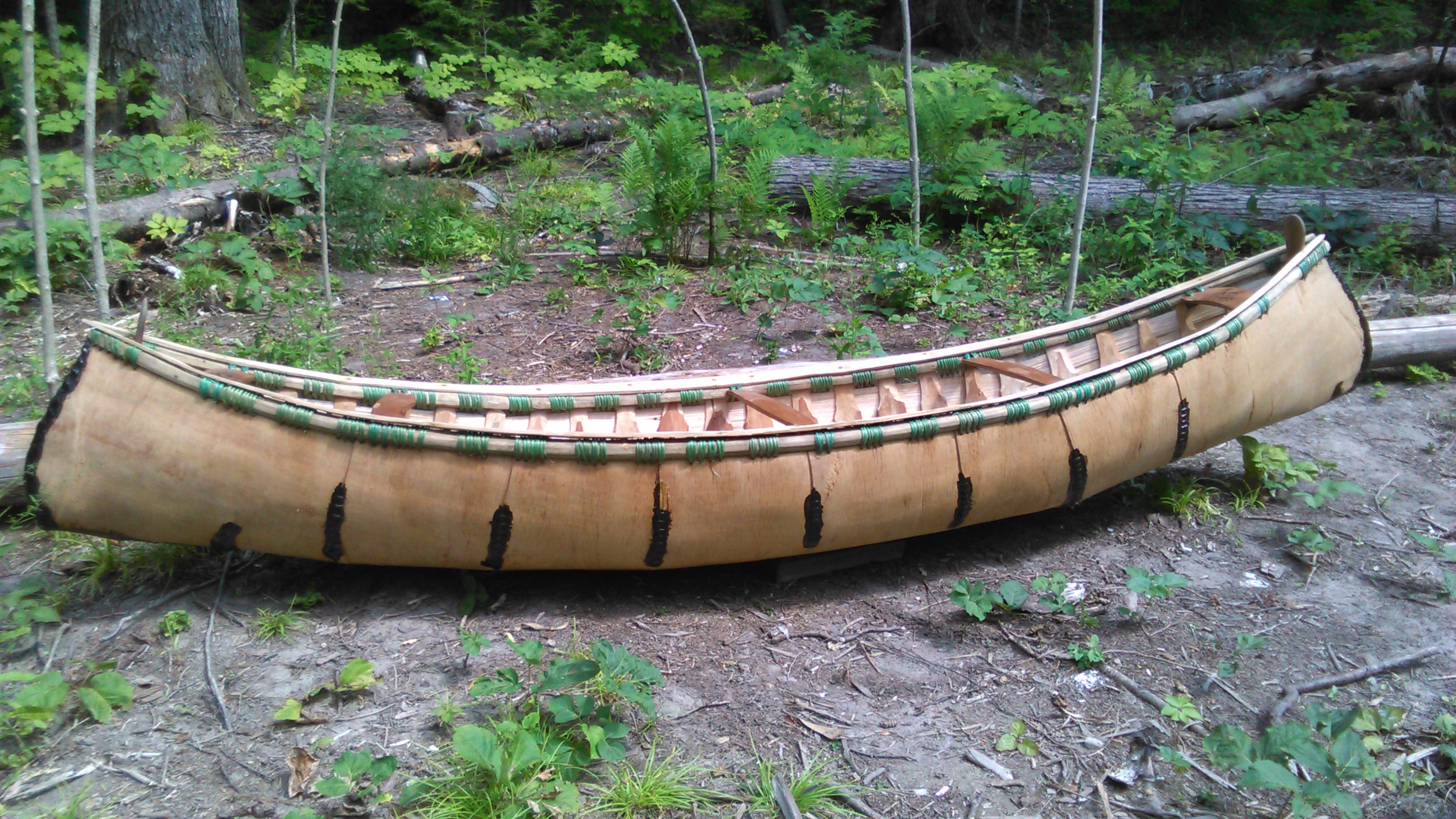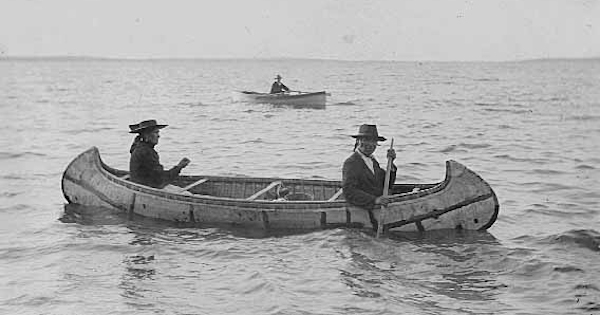
Ottawa Birch Bark Canoes: Traditional Construction of Great Lakes Water Transportation
The Great Lakes region, a vast expanse of freshwater connecting the heart of North America, owes much of its historical development and cultural tapestry to an ingenious vessel: the birch bark canoe. Far from a mere boat, this elegant craft, perfected over millennia by Indigenous peoples, was the lifeblood of trade, exploration, and survival. Particularly within the Ottawa River watershed and extending into the broader Great Lakes, the traditional construction of these canoes represents a profound understanding of natural materials, sophisticated engineering, and a deep spiritual connection to the land.
The birch bark canoe is a testament to human innovation, an embodiment of the principle that the most effective solutions often arise from the simplest, most accessible resources. Its design allowed for unparalleled versatility: light enough to be portaged over long distances between waterways, yet robust enough to carry substantial loads through treacherous rapids and across open lakes. For the Anishinaabeg, Algonquin, Ojibwe, Cree, and other First Nations of the region, the canoe was not just transportation; it was a home, a hunting platform, a fishing vessel, and a diplomatic tool. Later, it became the indispensable workhorse of the European fur trade, enabling the voyageurs to penetrate the continent’s interior, linking distant communities and economies.
The Ingenuity of Materials: Gifts from the Forest
The construction of a traditional birch bark canoe is a meticulous, labor-intensive process that relies entirely on materials harvested sustainably from the surrounding forest. Each component is chosen for specific properties, demonstrating an intimate knowledge of the natural world.
The star of the show is, of course, birch bark (Betula papyrifera). This remarkable material, harvested typically in late spring or early summer when the sap is running, is the canoe’s skin. Its unique properties – lightweight, waterproof, flexible when warm, and incredibly strong – make it ideal. A large canoe might require a single, flawless sheet of bark, often up to 20 feet long, carefully peeled from the tree in a continuous piece to avoid seams that could compromise integrity. The inner, smooth side of the bark faces outwards, offering less resistance in the water. Sustainable harvesting practices ensured the tree was not killed, allowing it to heal and provide bark again in future seasons.

Beneath the bark, providing structure and rigidity, is cedar wood (Thuja occidentalis). Known for its lightness, flexibility, and natural resistance to rot, cedar is split (not sawn) into thin planks for the canoe’s lining and bent into elegant ribs. The splitting process follows the grain, yielding strong, resilient pieces that conform beautifully to the canoe’s curves.
For stitching and lashing, spruce root (Picea spp.) is the preferred material. Harvested from the top few inches of the soil, these long, fibrous roots are carefully cleaned, split lengthwise into fine strands, and then soaked in water to become pliable. Once dried, they shrink, creating incredibly tight, waterproof seams that bind the bark, gunwales, and stems together.
Finally, to ensure watertight integrity, a natural sealant is applied: pine or spruce resin (pitch). This sticky sap is collected, heated, and mixed with charcoal (for color and UV resistance) and animal fat (often bear grease) to make it pliable and prevent cracking in cold weather. This mixture is then carefully applied to all seams, stitches, and any imperfections in the bark. Hardwoods like ash or maple might be used for gunwales (the upper edges of the canoe) and thwarts (cross braces) for added strength.
The Sacred Act of Creation: Building a Canoe
The construction process is not merely assembly; it is a ritualistic act, often beginning with a prayer and a deep respect for the materials and the finished vessel. It typically involves several skilled artisans working together, guided by generations of inherited knowledge.
-
Laying the Bark: The large, unrolled sheet of birch bark is carefully laid inner-side-up on a prepared, flat bed of earth. Stones or weights hold it in place. A master builder then sketches the desired shape of the canoe onto the bark.
-
The Inner Frame: An inner gunwale (the top edge of the canoe) assembly, typically made of two thin cedar strips, is placed on the bark, delineating the canoe’s final dimensions. Stakes are driven into the ground around this frame, pinning the bark in place and beginning to define the hull’s upward curve.
-
Shaping the Hull: Gradually, the bark is bent upwards and inward, using warmth (from fire or hot water) to make it more pliable. This delicate process shapes the distinctive tumblehome (inward curve) of the canoe, giving it its hydrodynamic form. The bark is carefully folded and pleated at the bow and stern, forming the ends.
-
Installing Stems: Carved wooden stems, often made from cedar, are fitted into the bow and stern. These provide structural integrity to the ends and define the canoe’s sharp entry and exit lines in the water. The bark is meticulously sewn to these stems using spruce root.
-
Sewing the Gunwales: The outer gunwales are then placed on top of the bark and lashed securely to the inner gunwales using more spruce root stitches. This creates a strong, reinforced top edge for the canoe. The sewing is incredibly precise, ensuring no gaps for water to enter.
-
Planking and Ribs: This stage gives the canoe its strength and final shape. Thin, flexible cedar planks are laid lengthwise inside the bark shell, protecting it and providing a smooth interior. Over these planks, steamed cedar ribs are bent and pressed into place, running perpendicular to the keel line, from gunwale to gunwale. Each rib is carefully shaped to fit the hull’s curve, creating a strong, resilient framework. The ribs are often installed in pairs, pressing the planks and bark firmly against the gunwales.
-
Sealing: Once the framework is complete, the canoe is turned over. The master builder meticulously applies the heated spruce or pine pitch mixture to all seams, stitches, and any small holes or imperfections in the bark. This is the final waterproofing step, creating an impervious seal that can withstand years of use.
-
Finishing Touches: Thwarts (cross-braces) are installed to maintain the canoe’s width and provide seating. Paddles are carved, and sometimes decorative elements, unique to the builder or community, are added. The finished canoe, often smelling faintly of cedar and pine pitch, is a work of art and a marvel of engineering.

A Living Legacy: Keepers of the Tradition
While the mass production of canvas and fiberglass canoes largely replaced birch bark vessels in the 20th century, the traditional art of birch bark canoe building has not been lost. Across the Great Lakes region and beyond, Indigenous communities and a growing number of non-Indigenous enthusiasts are actively engaged in preserving and reviving this ancient craft. Master builders, often elders, pass down their knowledge through apprenticeships, ensuring that the skills and spiritual connection to the land endure.
These contemporary builders are not merely replicating old designs; they are maintaining a living cultural practice. Each canoe built today is a tangible link to the past, a powerful symbol of Indigenous resilience, ingenuity, and cultural resurgence. Educational programs, workshops, and museum exhibits dedicated to birch bark canoe construction highlight its historical significance and ongoing relevance. For many, building a canoe is a profound journey, a reconnection with ancestral practices and a deeper understanding of the natural world. As one might hear from an elder, "Every canoe has a spirit, born from the forest and shaped by human hands, carrying stories and journeys."
The Enduring Impact
The birch bark canoe profoundly shaped the history and geography of the Great Lakes. It enabled the vast networks of trade that connected First Nations for centuries before European contact. It was the vehicle for the "discovery" of the continent by Europeans, facilitating the fur trade that drove early colonial economies and charting the waterways that would become national borders.
Today, its legacy continues. The canoe remains a powerful cultural icon, symbolizing resilience, adaptability, and harmony with nature. It represents a sustainable technology that existed long before the modern concept of "green living." The Ottawa River, a central artery for these vessels, continues to echo with the stories of those who paddled its waters in these incredible craft. The birch bark canoe is more than just a historical artifact; it is a living testament to human ingenuity, a bridge between past and present, and a powerful reminder of the deep and enduring wisdom embedded in traditional Indigenous knowledge. Its elegant form and remarkable functionality continue to inspire, reminding us of the profound lessons the natural world offers when approached with respect and understanding.


